Palmiers
- By Jennifer Segal
- Updated September 23, 2025
- 19 Comments
- Leave a Review

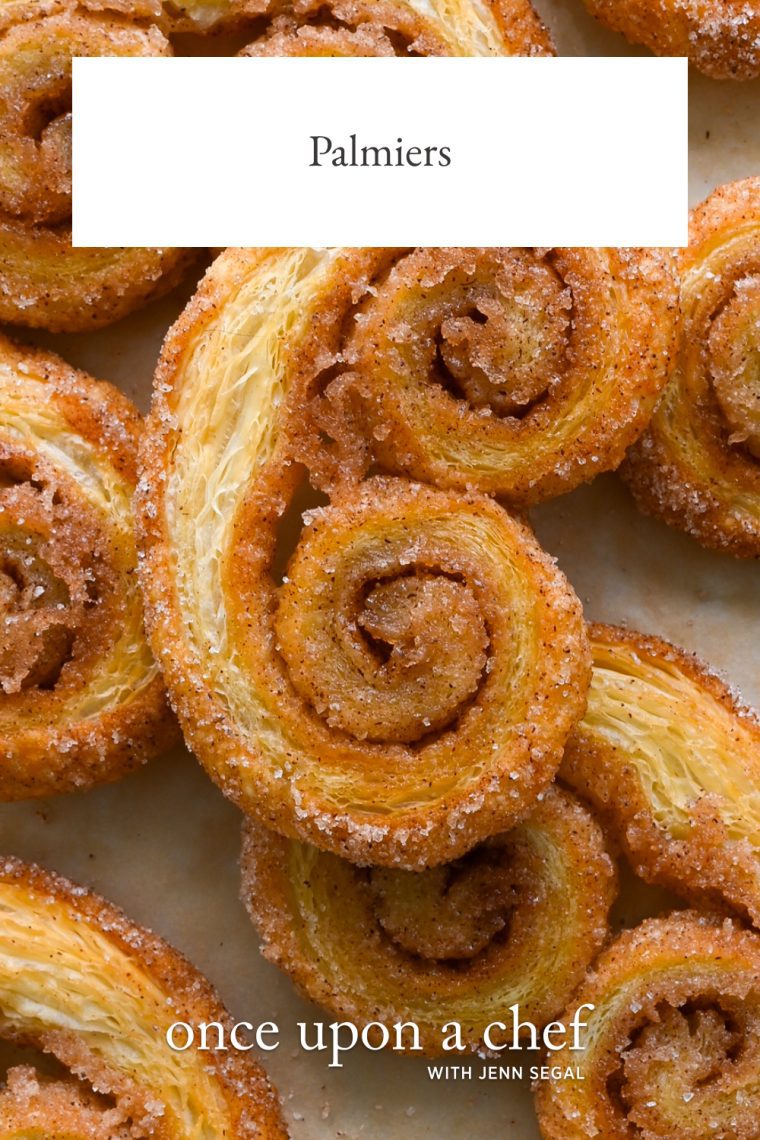
This post may contain affiliate links. Read my full disclosure policy.
Transform your kitchen into a French bakery with simple heart-shaped palmiers—buttery, flaky pastries layered with caramelized sugar.
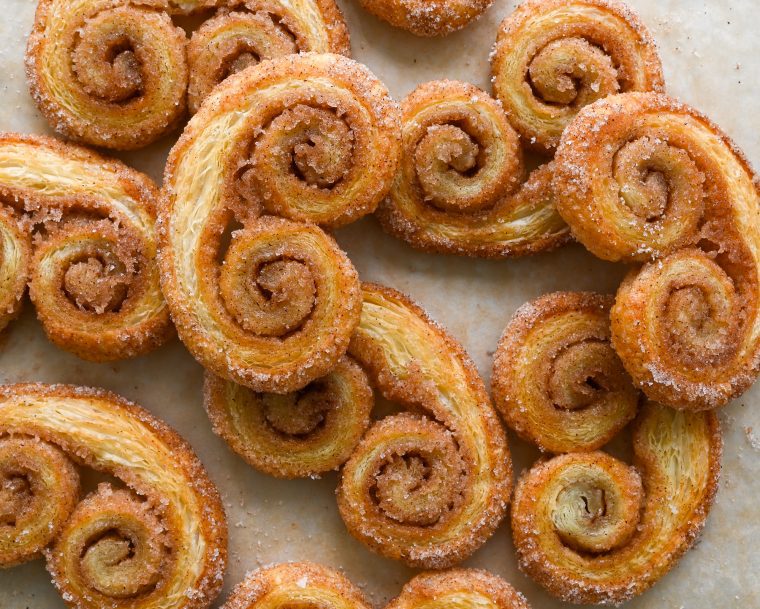
Palmiers, pronounced “pahl-me-ay” and also known as elephant ears, butterfly cookies, or French hearts, are a classic French pastry made with just two simple ingredients: sugar (sometimes with a little spice or citrus zest) and puff pastry. I first learned to make them in culinary school as a clever way to use up leftover puff pastry—one of many lessons in the zero-waste mindset of restaurant kitchens. But thanks to high-quality store-bought puff pastry, they’re super easy to make at home any time.
The process couldn’t be simpler: sprinkle sugar over thawed puff pastry, roll it up, slice, and bake. They puff up into golden, caramelized spirals, with flaky layers that form adorable heart shapes—perfect for holiday cookie platters or to enjoy with your morning coffee.
“The best Palmier recipe! I have tried many. This was so easy!”
What You’ll Need To Make Palmiers
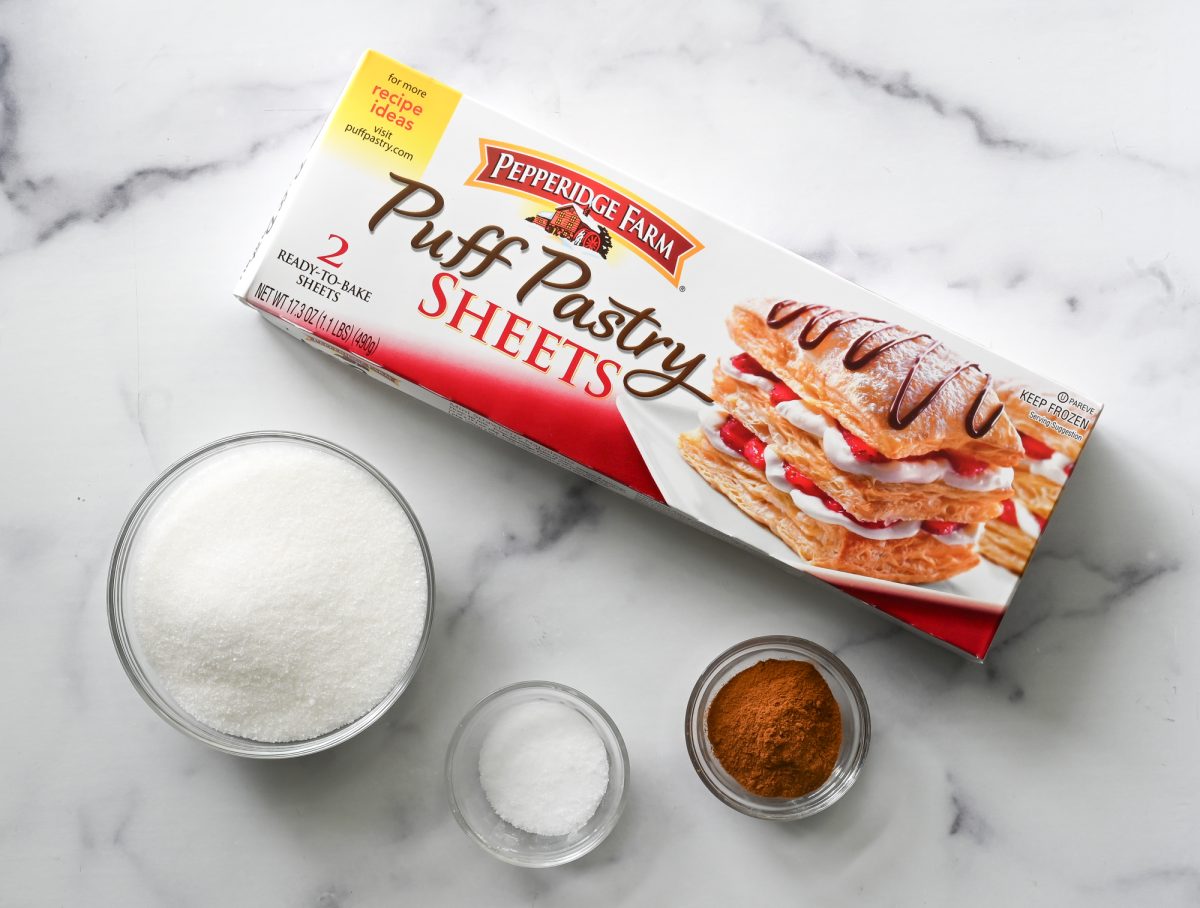
- Granulated Sugar: Sweetens and gives a caramelized texture as the pastries bake, giving the Palmiers their characteristic golden, crispy exterior.
- Cinnamon: Lends a subtle warmth and spiciness.
- Salt: Balances the sweetness of the sugar.
- Puff Pastry: This dough is known for its endless buttery, flaky layers. Using frozen puff pastry makes this recipe super convenient and accessible, as it’s ready to use after thawing. The quality of the puff pastry can greatly impact the texture of the pastries, so choose a high-quality brand like Pepperidge Farm or Dufour.
- Jump to the printable recipe for precise measurements
Step-by-Step Instructions
Step 1: Make the cinnamon-sugar. In a small bowl, mix together the granulated sugar, cinnamon, and salt.
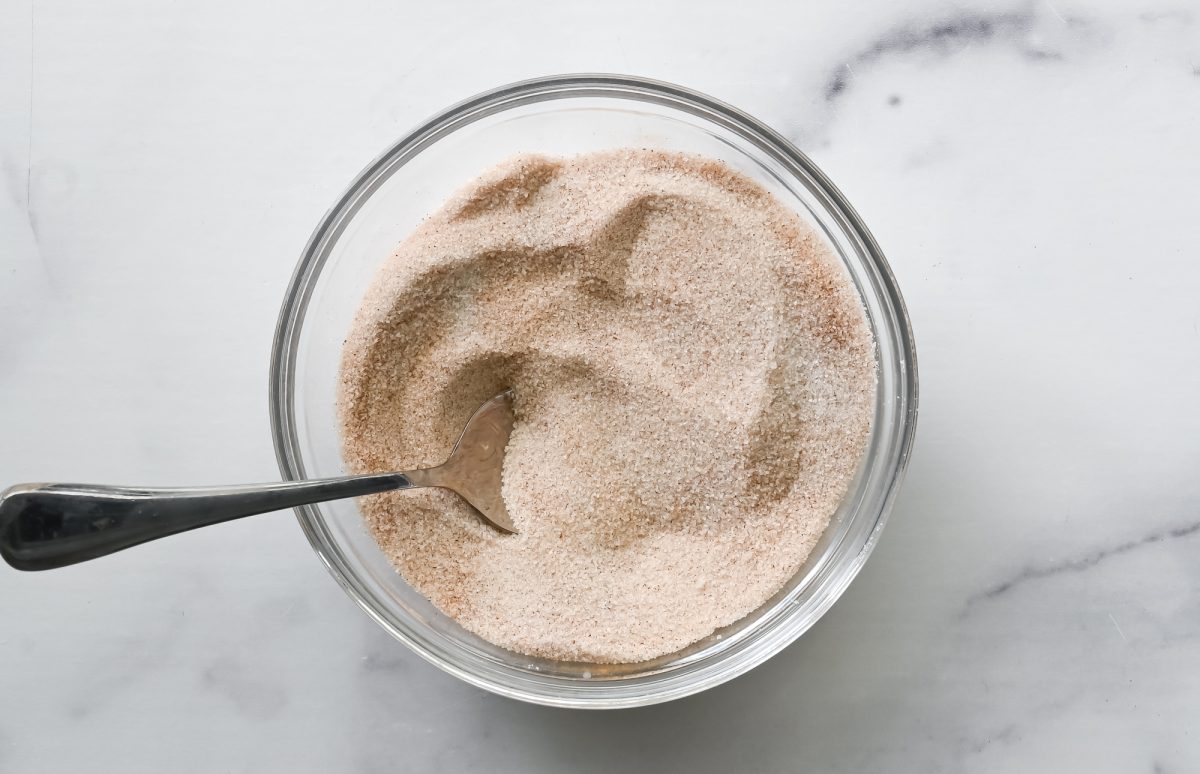
Step 2: Roll the puff pastry. Sprinkle a little cinnamon-sugar over your work surface, then lay the puff pastry on top. Roll it out into a 9×12-inch rectangle, smoothing out any creases as you go.
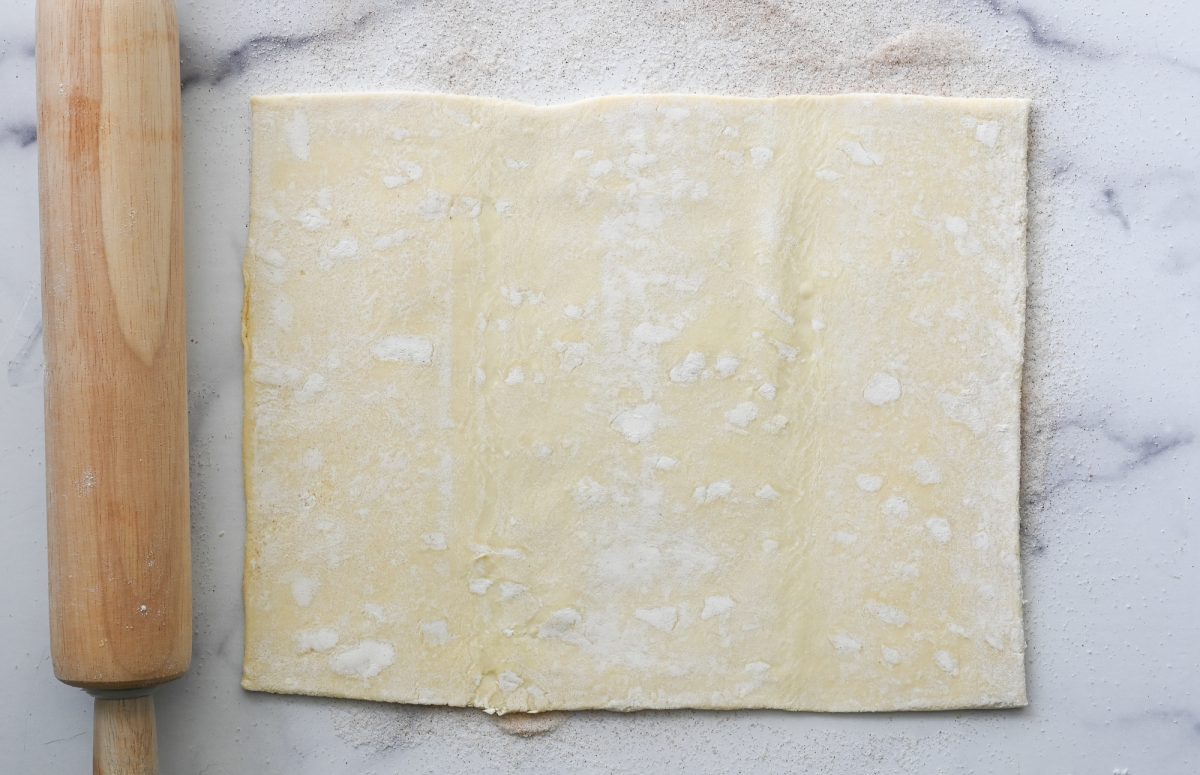
Step 3: Add the sugar. Sprinkle ¼ cup of the cinnamon-sugar evenly over the pastry, then give it a quick roll with the pin to press the sugar in.
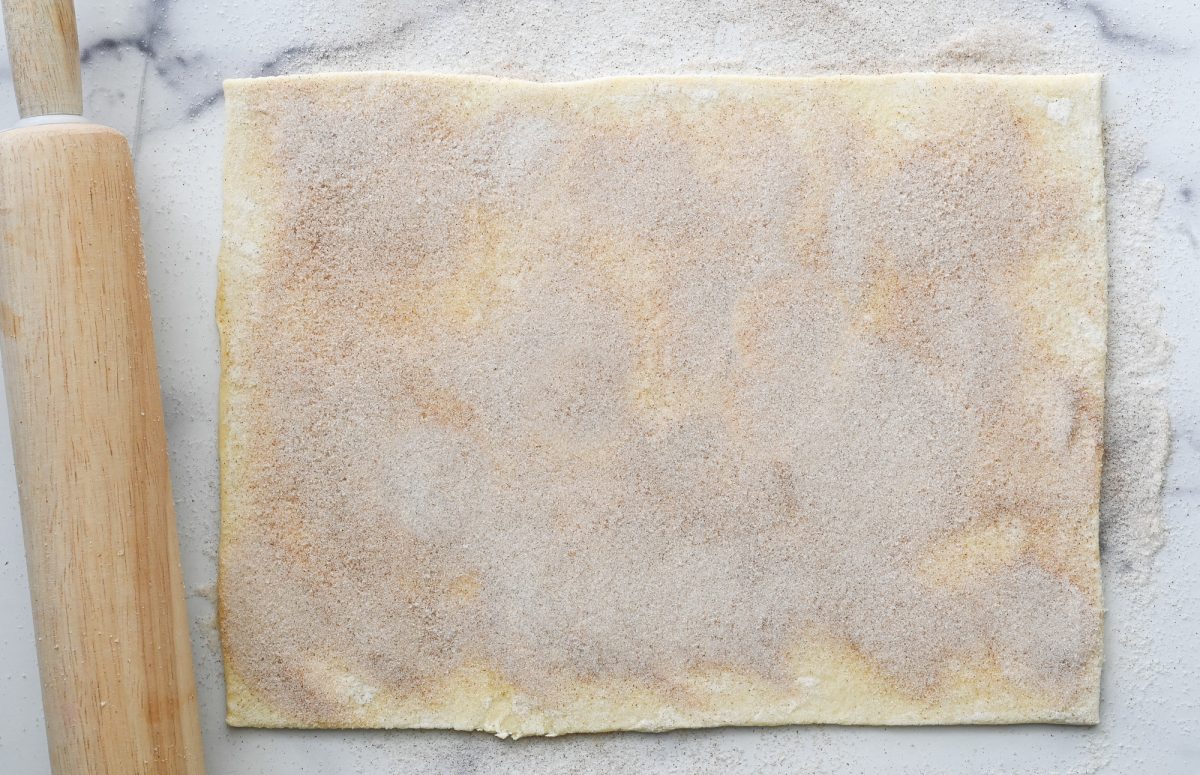
Step 4: Roll it up. Roll the short sides of the dough toward the center, so they meet in the middle. It should look like a pair of scrolls.
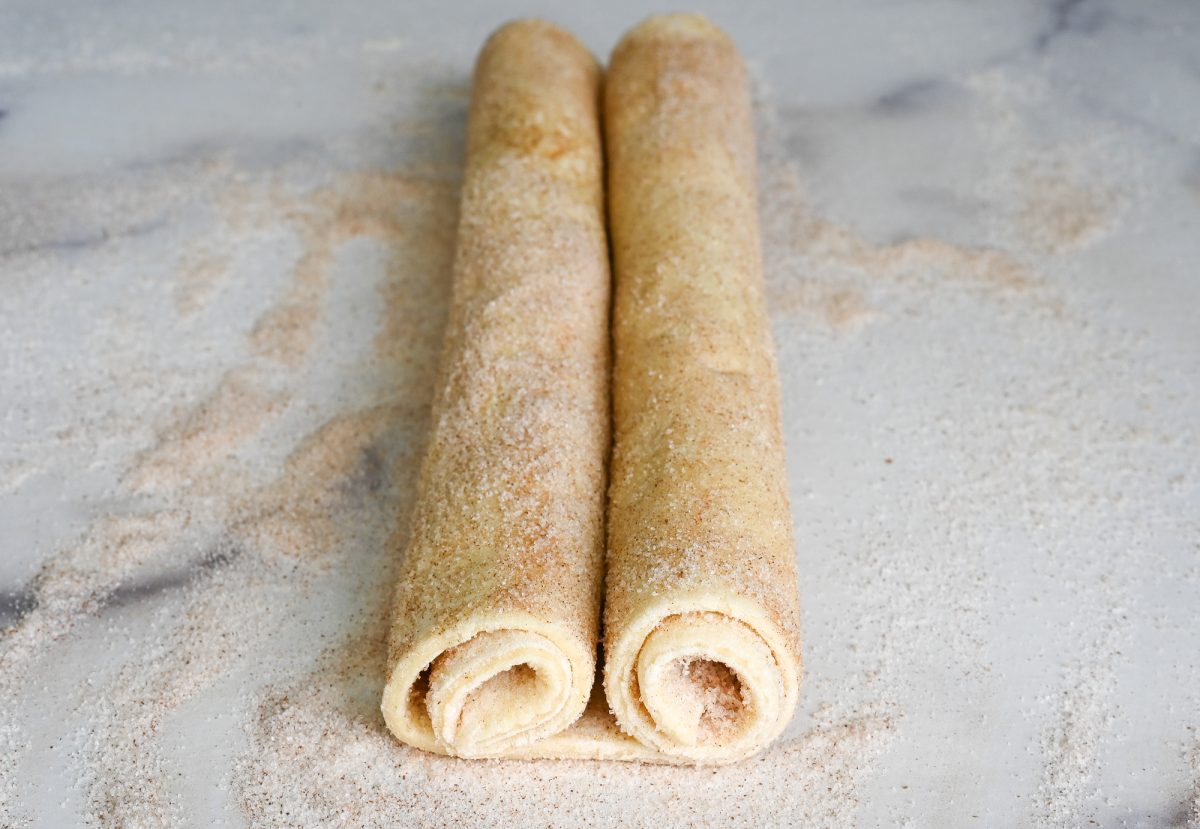
Step 5: Slice the pastry. Flip the roll over and gently press the sides together to compact it to about 2 inches thick. Using a sharp knife and a gentle sawing motion, cut it into ½-inch slices.
Pro tip: You can make palmiers ahead of time up to the slicing stage—just cover and refrigerate until ready to bake, or freeze for up to 3 months.
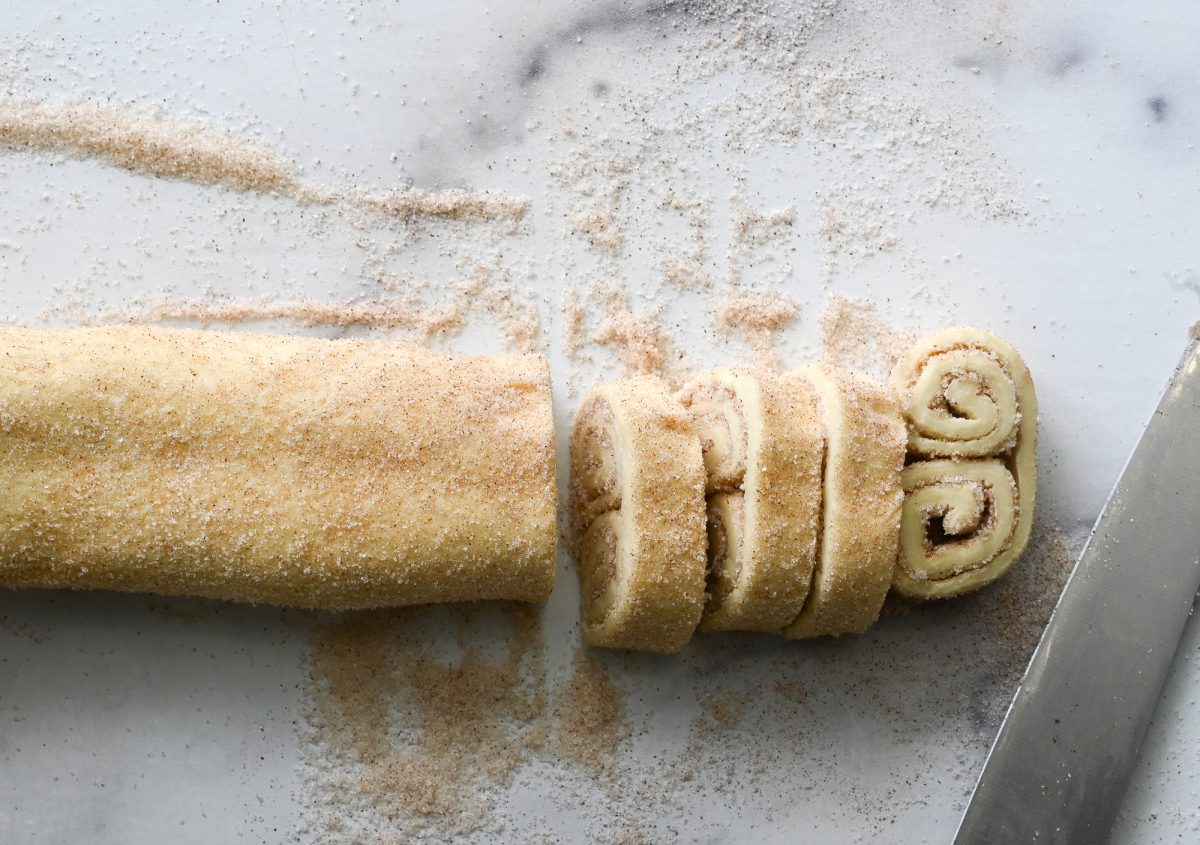
Step 6: Arrange for baking. Place the slices on the prepared baking sheet, leaving about 2 inches between them. If any start to unravel, just roll them back up. Keep the extra slices chilled until you’re ready to bake.
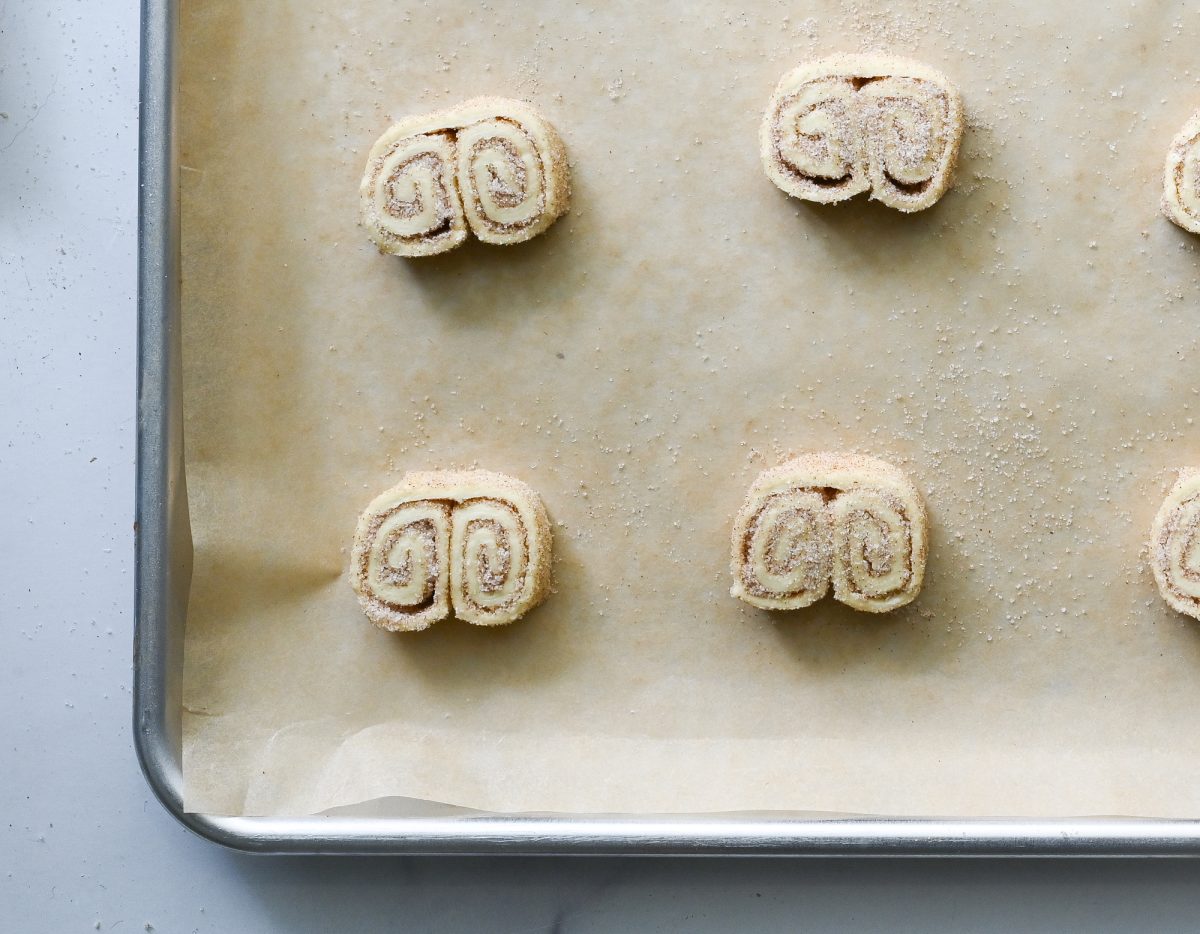
Step 7: Bake. Bake for 12 minutes, then take the pan out of the oven and carefully flip the palmiers with a metal spatula. The caramelized sugar will be very hot, so don’t use your fingers—grab a spoon or another utensil to help if needed.
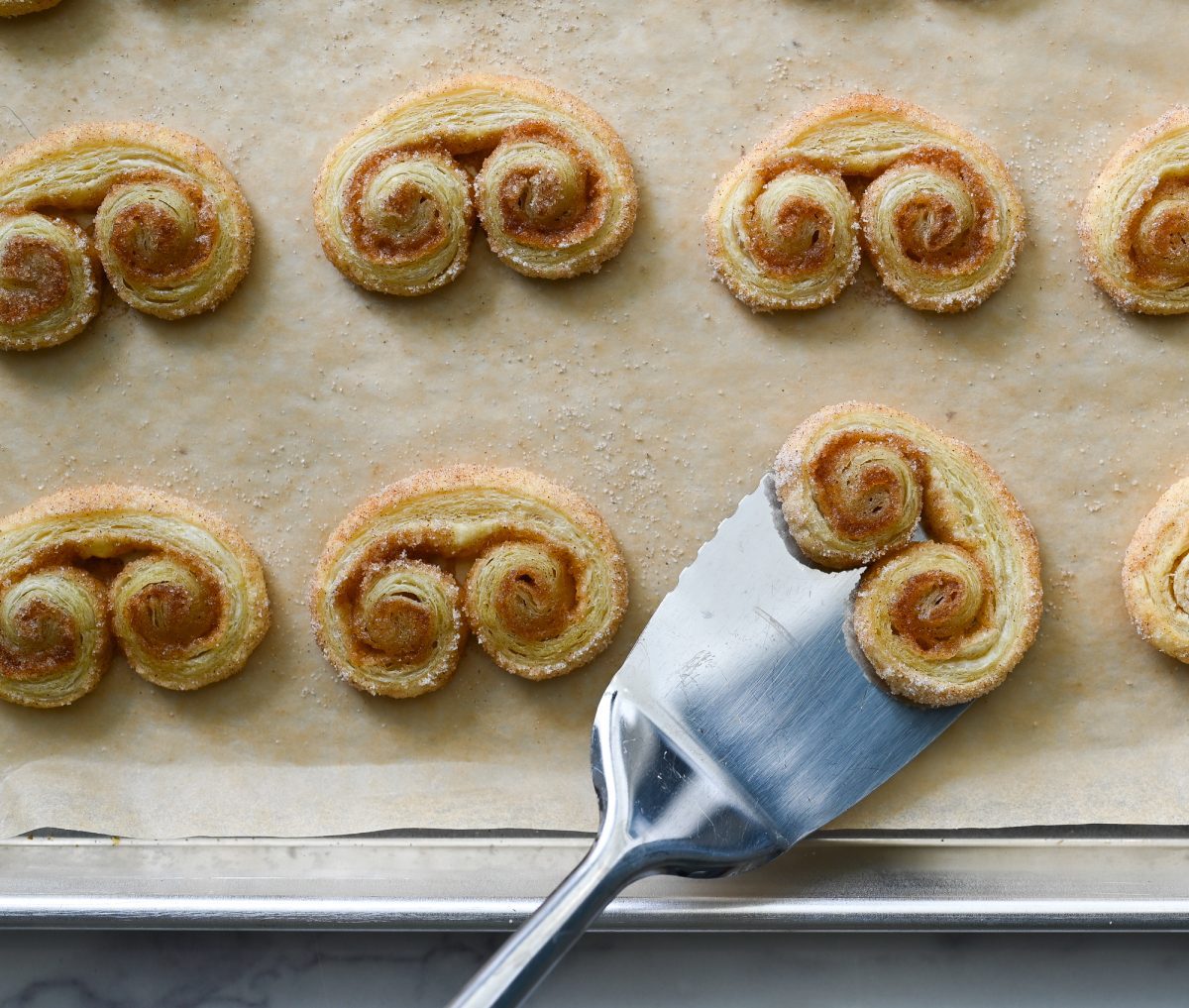
Step 8: Finish baking. Return the pan to the oven for another 5 to 6 minutes, until the palmiers are golden, puffed, and caramelized on both sides. Let them cool on the baking sheet for a few minutes, then transfer to a wire rack to cool completely.
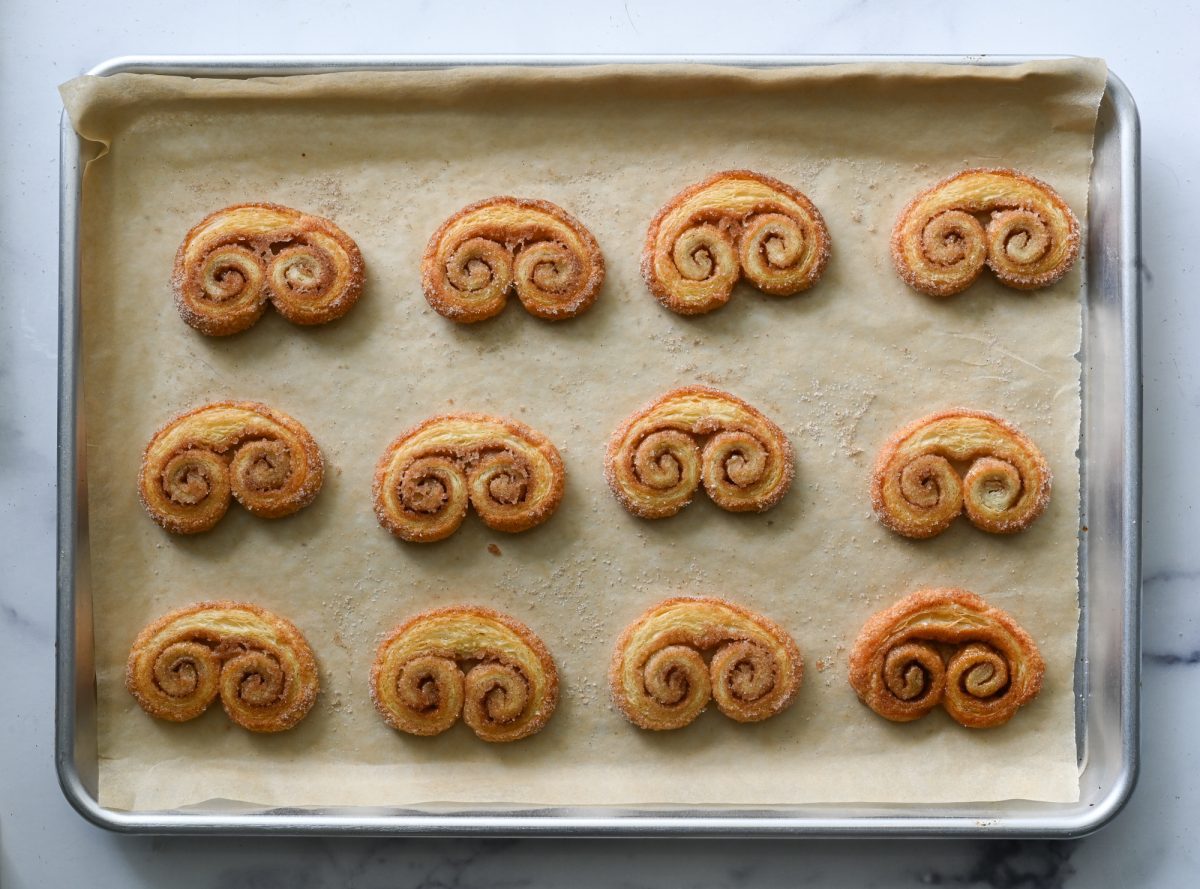
Want to make savory palmiers? Instead of using sugar and cinnamon, try spreading a thin layer of pesto sauce or tapenade over the puff pastry. You can also add grated cheese, such as Parmigiano Reggiano, cheddar or gruyère, as well as herbs like thyme or rosemary for extra flavor. These savory versions are great as appetizers or snacks!
You May Also Like
Palmiers

Treat yourself to buttery palmiers—crispy, sweet pastries with a delicious caramelized finish.
Ingredients
- ¾ cup granulated sugar
- 1½ teaspoons ground cinnamon
- ⅛ teaspoon salt
- 1 (17.3-ounce) package (2 sheets) frozen puff pastry, thawed (Pepperidge Farm recommended)
Instructions
- Preheat your oven to 400°F and set an oven rack in the middle position. Line a baking sheet with parchment paper.
- In a small bowl, mix the granulated sugar, cinnamon, and salt.
- Sprinkle a clean surface with 2 tablespoons of the cinnamon-sugar mixture. Unfold one of the puff pastry sheets over the sugared surface. Roll it out slightly to a 9x12-inch rectangle, doing your best to smooth out the creases.
- Sprinkle ¼ cup of the cinnamon sugar mixture evenly over the pastry. Using the rolling pin, roll over the sugar mixture a few times to press into the pastry.
- Roll the short sides of the dough toward center, so they meet in the middle. Flip the rolled pastry over and gently press together on the sides with your hands to form a compact roll about 2 inches in diameter. Repeat with the remaining pastry and cinnamon-sugar mixture.
- Using a sharp knife and sawing motion, cut the rolls into about ½-inch slices. Place the slices on the prepared baking sheets, spacing them about 2 inches apart. If the rolls unravel a bit in the process, just roll them back together. Keep any additional rolls chilled in the refrigerator until you're ready to bake them. Bake for 12 minutes. Remove the pan from the oven and, using a metal spatula, carefully flip the palmiers over. Note that the caramelized sugar makes them extremely hot, so don't use your fingers to nudge them onto the spatula; use another utensil, such as a small spoon, if necessary. Place the pan back into the oven for another 5 to 6 minutes, until golden, puffed, and nicely caramelized on both sides.
- Allow the palmiers to cool on the baking sheet for a few minutes, then transfer to a wire rack to cool completely. Repeat with remaining rolled dough. Store the cooled palmiers in an airtight container at room temperature. These treats are best enjoyed on the day they are baked but will keep for a few days.
- Make-Ahead/Freezer-Friendly Instructions: Palmiers can be prepared up to the slicing stage a day in advance. Once sliced, arrange them on a baking sheet, cover with plastic wrap, and refrigerate until you're ready to bake. For freezing, prepare and slice the palmiers as per the recipe, then place the slices on a parchment-lined baking sheet without them touching. Freeze until firm, which should take a few hours. Once frozen, transfer the palmiers to a freezer-safe container, with layers separated by parchment paper, and freeze for up to 3 months. When you're ready to enjoy your palmiers, bake them straight from the freezer on a parchment-lined baking sheet, allowing a few extra minutes in the oven since they'll be baking from frozen.
- Pro Tip: The pastry should remain cold throughout the rolling and slicing process. If at any point it becomes too warm to easily work with, pop it in the fridge for a bit until cool.
Nutrition Information
Powered by ![]()
- Serving size: 1 palmier
- Calories: 100
- Fat: 6 g
- Saturated fat: 2 g
- Carbohydrates: 12 g
- Sugar: 5 g
- Fiber: 0 g
- Protein: 1 mg
- Sodium: 50 mg
- Cholesterol: 0 mg
This website is written and produced for informational purposes only. I am not a certified nutritionist and the nutritional data on this site has not been evaluated or approved by a nutritionist or the Food and Drug Administration. Nutritional information is offered as a courtesy and should not be construed as a guarantee. The data is calculated through an online nutritional calculator, Edamam.com. Although I do my best to provide accurate nutritional information, these figures should be considered estimates only. Varying factors such as product types or brands purchased, natural fluctuations in fresh produce, and the way ingredients are processed change the effective nutritional information in any given recipe. Furthermore, different online calculators provide different results depending on their own nutrition fact sources and algorithms. To obtain the most accurate nutritional information in a given recipe, you should calculate the nutritional information with the actual ingredients used in your recipe, using your preferred nutrition calculator.
See more recipes:
Comments
Add a Comment Cancel reply
This site uses Akismet to reduce spam. Learn how your comment data is processed.
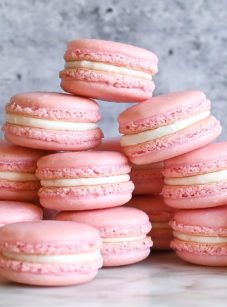

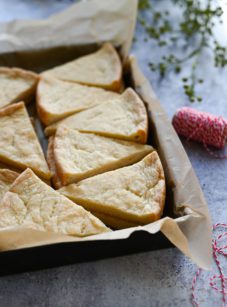

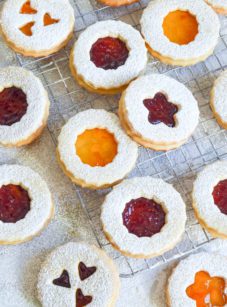

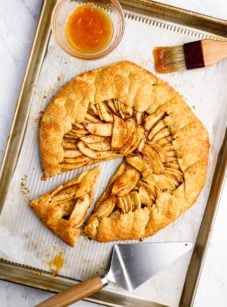
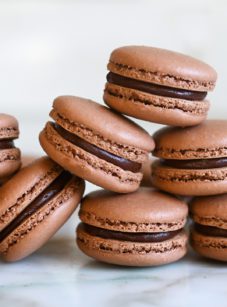
My first batch is baking now–rolled them too tightly using excellent Trader Joe’s Butter Puff Pastry (only available around Christmas each year). Anyway, highly suggest clarification on NOT ROLLING tightly–seems counterintuitive, but mine are not rising at all because, I think, I rolled them too tightly. Sigh. Will try a looser roll with the second sheet and hope for the best!
Such an easy recipe… I might cut them a tad thinner next time but otherwise love how they turned out and the yummy taste! A keeper!